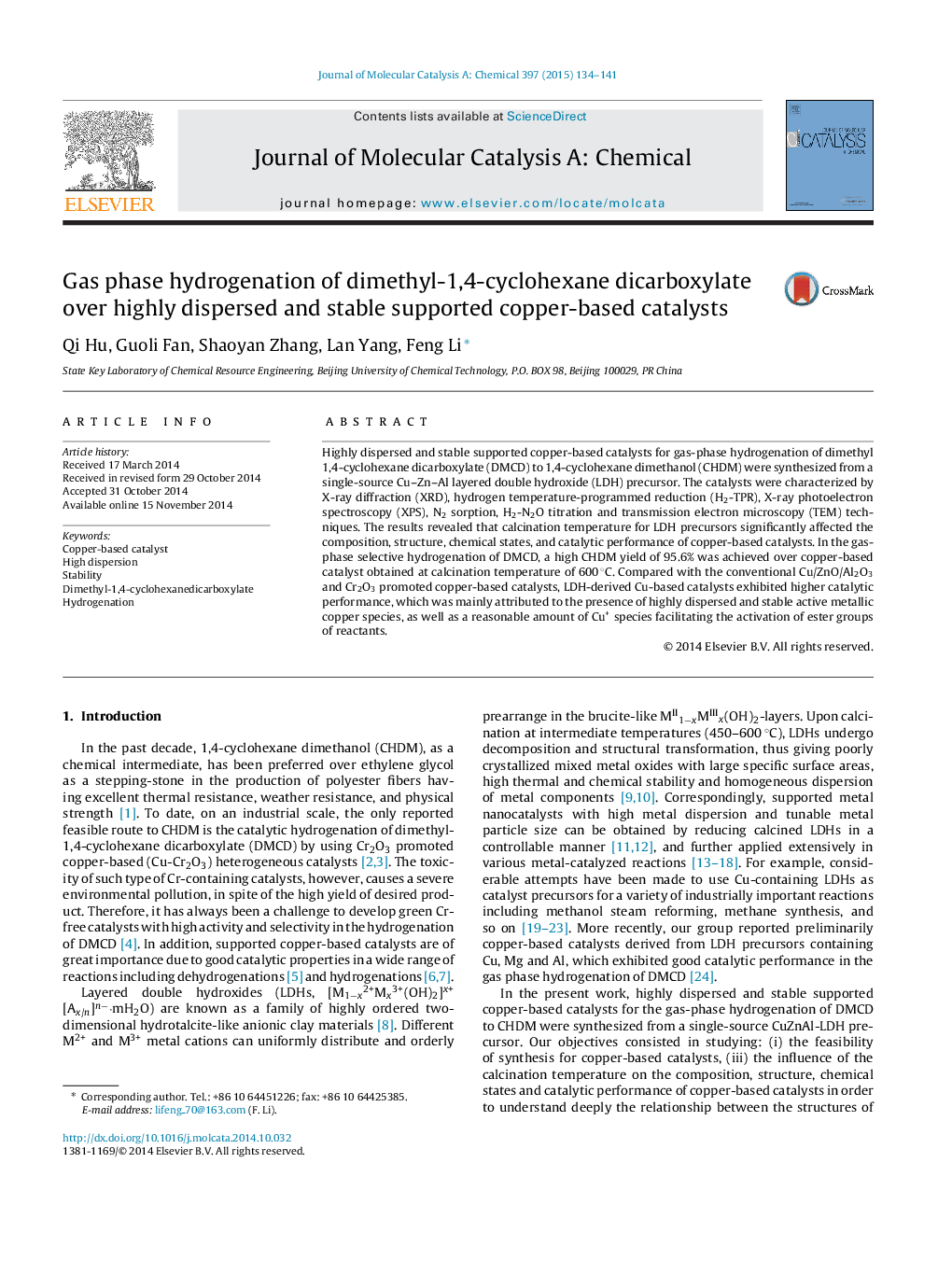| کد مقاله | کد نشریه | سال انتشار | مقاله انگلیسی | نسخه تمام متن |
|---|---|---|---|---|
| 65092 | 48382 | 2015 | 8 صفحه PDF | دانلود رایگان |

• Highly dispersed Cu-based catalysts were obtained from a single source precursor.
• Calcination temperature affected significantly the chemical states of copper species.
• Cu-based catalysts exhibited excellent performance in hydrogenation of DMCD.
• Synergic effect between Cu0 sites and Cu+ sites greatly promoted the activity.
Highly dispersed and stable supported copper-based catalysts for gas-phase hydrogenation of dimethyl 1,4-cyclohexane dicarboxylate (DMCD) to 1,4-cyclohexane dimethanol (CHDM) were synthesized from a single-source Cu–Zn–Al layered double hydroxide (LDH) precursor. The catalysts were characterized by X-ray diffraction (XRD), hydrogen temperature-programmed reduction (H2-TPR), X-ray photoelectron spectroscopy (XPS), N2 sorption, H2-N2O titration and transmission electron microscopy (TEM) techniques. The results revealed that calcination temperature for LDH precursors significantly affected the composition, structure, chemical states, and catalytic performance of copper-based catalysts. In the gas-phase selective hydrogenation of DMCD, a high CHDM yield of 95.6% was achieved over copper-based catalyst obtained at calcination temperature of 600 °C. Compared with the conventional Cu/ZnO/Al2O3 and Cr2O3 promoted copper-based catalysts, LDH-derived Cu-based catalysts exhibited higher catalytic performance, which was mainly attributed to the presence of highly dispersed and stable active metallic copper species, as well as a reasonable amount of Cu+ species facilitating the activation of ester groups of reactants.
Figure optionsDownload high-quality image (204 K)Download as PowerPoint slide
Journal: Journal of Molecular Catalysis A: Chemical - Volume 397, February 2015, Pages 134–141